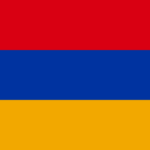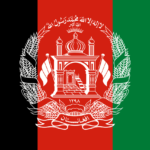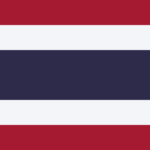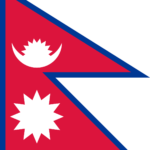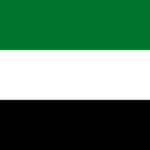Armenia
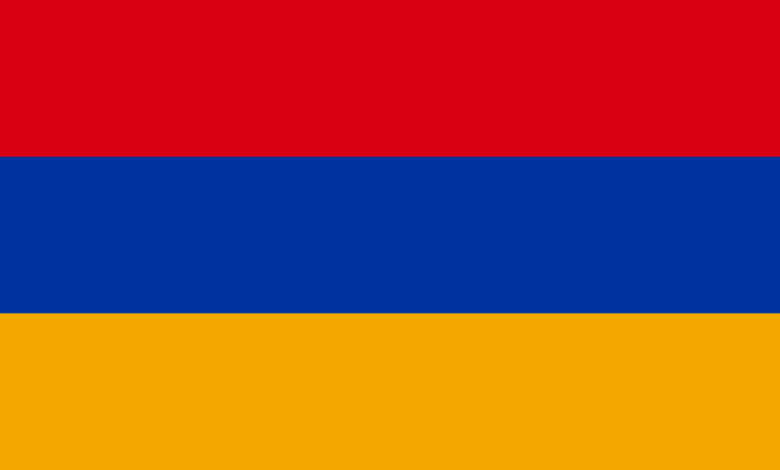
With an area of 29,743 km² Armenia is just slightly smaller than Belgium, or slightly smaller than the U.S. state of Maryland. The Republic of Armenia is a landlocked country in the Armenian Highlands of Western Asia. It is a part of the Caucasus region; and is bordered by Turkey to the west, Georgia to the north, the Lachin corridor (under a Russian peacekeeping force) and Azerbaijan to the east, and Iran and the Azerbaijani exclave of Nakhchivan to the south. Yerevan is the capital, the largest city and the financial centre.
The ancient Armenian kingdom was split between the Byzantine and Sasanian Empires around the early 5th century. Under the Bagratuni dynasty, the Bagratid Kingdom of Armenia was restored in the 9th century. Declining due to the wars against the Byzantines, the kingdom fell in 1045 and Armenia was soon after invaded by the Seljuk Turks. An Armenian principality and later a kingdom Cilician Armenia was located on the coast of the Mediterranean Sea between the 11th and 14th centuries.
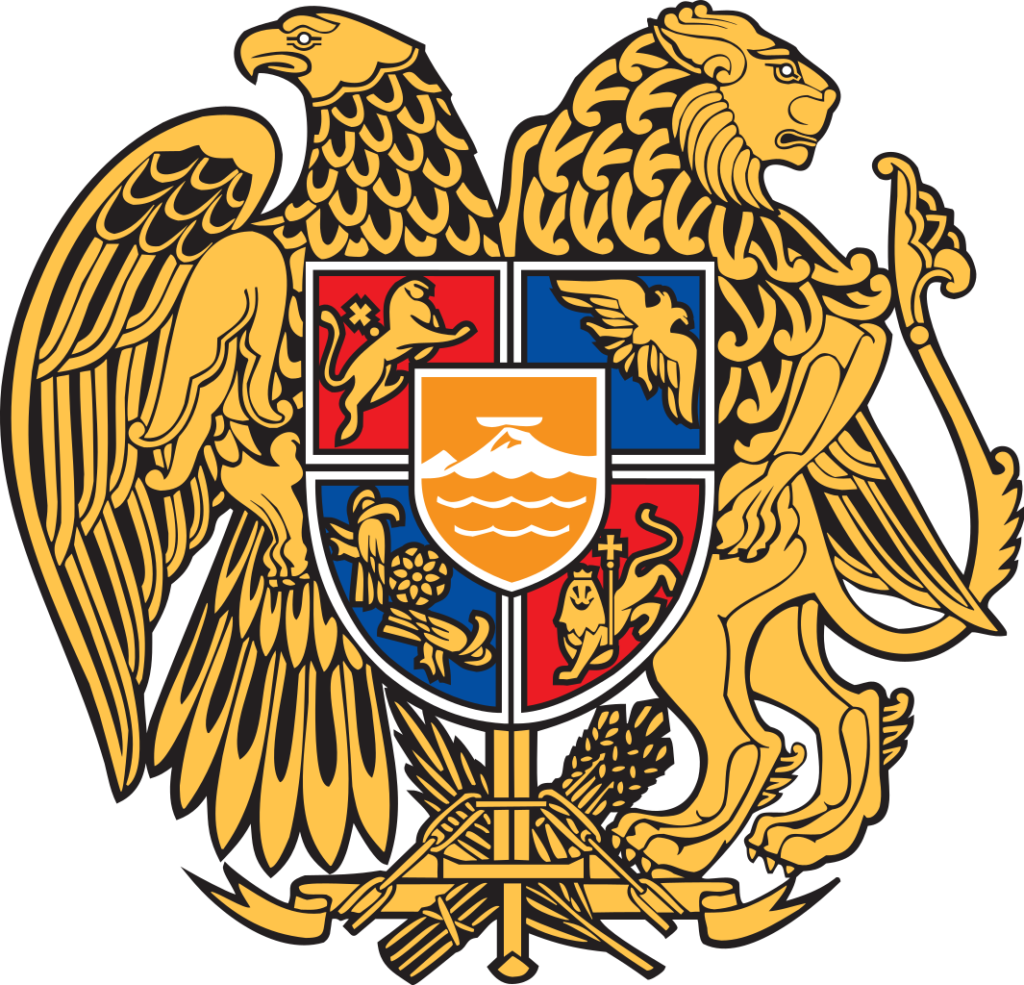
|
Location of Armenia
|
|
| Capital
and largest city
|
Yerevan 40°11′N 44°31′ECoordinates: 40°11′N 44°31′E |
|---|---|
| Official languages | Armenian[1] |
| Ethnic groups
(2011)
|
|
| Religion
|
Christianity (Armenian Apostolic Church)[4] |
| Demonym(s) | Armenian |
| Government | Unitary parliamentary republic |
| Vahagn Khachaturyan | |
| Nikol Pashinyan | |
| Alen Simonyan | |
| Legislature | National Assembly |
| Establishment | |
| 6th century BC | |
| 321 BC–428 AD | |
| 190 BC | |
| 52–428 | |
| 885–1045 | |
| 1198–1375 | |
| 28 May 1918 | |
| 29 November 1920 | |
| 23 September 1991 | |
| 21 December 1991 | |
| 2 March 1992 | |
| 5 July 1995 | |
| Area | |
|
• Total
|
29,743 km2 (11,484 sq mi) (138th) |
|
• Water (%)
|
4.71[8] |
| Population | |
|
• 2022 estimate
|
3,000,756[9] (138th) |
|
• Density
|
101.5/km2 (262.9/sq mi) |
| GDP (PPP) | 2022 estimate |
|
• Total
|
|
|
• Per capita
|
|
| GDP (nominal) | 2022 estimate |
|
• Total
|
|
|
• Per capita
|
|
| Gini (2019) | low |
| HDI (2021) | high · 85th |
| Currency | Dram (֏) (AMD) |
| Time zone | UTC+4 (AMT) |
| Date format | dd.mm.yyyy |
| Driving side | right |
| Calling code | +374 |
| ISO 3166 code | AM |
| Internet TLD | |
|
Website
www |
|
Map view
The Flag
The Flag of Armenia
The law “On the State Flag of the Republic of Armenia” was adopted on August 24, 1990, by the Supreme Soviet of the Republic of Armenia. Following the constitutional reform of November 27, 2005, a new RA law on the…
National Anthem
Mer Hayrenik (Our Fatherland)
“Our Fatherland” (Armenian: Մեր Հայրենիք, pronounced: mair hy-ren-IK) serves as the national anthem of Armenia. Penned by Mikael Nalbandian in 1861, with the accompanying melody composed by Barsegh Kanachyan,[1] it draws inspiration from the poem “The Song of an Italian…
History
Armenia was a regional empire with a rich culture in the years leading up to the 1st Century CE, at one period controlling all the land between the Black and Caspian Seas.
In 301, Armenia was the first state to formally adopt Christianity as its official state religion, twelve years before Rome. It also changed between various dynasties. But after the Parthian (Iranian), Roman, Arab, Mongol and Persian occupations, Armenia had been substantially weakened. In 1454, the Ottoman Empire and Safavid Persia divided Armenia among themselves. […]
Geography
Armenia is a landlocked country in the geopolitical Transcaucasus (South Caucasus) region, that is located in the Southern Caucasus Mountains and their lowlands between the Black Sea and Caspian Sea, and northeast of the Armenian Highlands. Located in Western Asia, on the Armenian Highlands, it is bordered by Turkey to the west, Georgia to the north, the Lachin corridor which is a part of Lachin District that is under the control of a Russian peacekeeping force and Azerbaijan proper to the east, and Iran and Azerbaijan’s exclave of Nakhchivan to the south. Armenia lies between latitudes 38° and 42° N, and meridians 43° and 47° E. It contains two terrestrial ecoregions: Caucasus mixed forests and Eastern Anatolian montane steppe.
Topography
Armenia has a territorial area of 29,743 square kilometres (11,484 sq mi). The terrain is mostly mountainous, with fast flowing rivers, and few forests. The land rises to 4,090 metres (13,419 feet) above sea level at Mount Aragats, and no point is below 390 metres (1,280 ft) above sea level. Average elevation of the country area is tenth highest in the world and it has 85.9% mountain area, more than Switzerland or Nepal.
Mount Ararat, which was historically part of Armenia, is the highest mountain in the region at 5,137 meters (16,854 feet). Now located in Turkey, but clearly visible from Armenia, it is regarded by the Armenians as a symbol of their land. Because of this, the mountain is present on the Armenian national emblem today.
Climate
The climate in Armenia is markedly highland continental. Summers are hot, dry and sunny, lasting from June to mid-September. The temperature fluctuates between 22 and 36 °C (72 and 97 °F). However, the low humidity level mitigates the effect of high temperatures. Evening breezes blowing down the mountains provide a welcome refreshing and cooling effect. Springs are short, while autumns are long. Autumns are known for their vibrant and colourful foliage.
Winters are quite cold with plenty of snow, with temperatures ranging between −10 and −5 °C (14 and 23 °F). Winter sports enthusiasts enjoy skiing down the hills of Tsaghkadzor, located thirty minutes outside Yerevan. Lake Sevan, nestled up in the Armenian highlands, is the second largest lake in the world relative to its altitude, at 1,900 metres (6,234 ft) above sea level.
Environment
Armenia ranked 63rd out of 180 countries on Environmental Performance Index (EPI) in 2018. Its rank on the subindex of Environmental Health (which is weighted at 40% in EPI) is 109, while Armenia’s rank on the subindex of Ecosystem Vitality (weighted at 60% in EPI) is 27th best in the world. This suggests that the main environmental issues in Armenia are population health, while environmental vitality is of lesser concern. Out of the sub-subindices contributing to the Environmental Health subindex ranking on Air Quality to which the population is exposed is particularly unsatisfying.
Waste management in Armenia is underdeveloped, as no waste sorting or recycling takes place at Armenia’s 60 landfills. A waste processing plant is scheduled for construction near Hrazdan city, which will allow for the closure of 10 waste dumps.
Despite the availability of abundant renewable energy sources in Armenia (especially hydroelectric and wind power) and calls from EU officials to shut down the nuclear power plant at Metsamor, the Armenian Government is exploring the possibilities of installing new small modular nuclear reactors. In 2018 existing nuclear plant is scheduled for modernization to enhance its safety and increase power production by about 10%.
Official sites in Armenia
Official Sites of Armenia
Armenia is a republic with a semi-presidential governing system. The head of state is the President. The president appoints the prime minister, who appoints the members of the government. Legislative power is vested in both the government and the unicameral National Assembly (parliament).
According to Freedom House
and other sources, corruption, constitutional reform, and a troubled geopolitical environment continued to present challenges to Armenia.
In Transparency International Corruption Perceptions Index 2015
where the least corrupt country ranks #1, Armenia is ranked #95 (out of 168) together with Mali, Mexico, and the Philippines.
Administration of the President of the Republic of Armenia
Official site of the President, head of state of Armenia.
Government of Republic of Armenia
Official Government website of the Republic of Armenia.
Parliament of Armenia
The National Assembly of Armenia online.
Ministry of Foreign Affairs
The official site of Armenia’s Ministry of Foreign Affairs provides information on Armenia and its foreign relations.
Permanent Mission of the Rep. of Armenia to the UN: The Mission
The Armenian Mission to the United Nations official website provides statements and other information that is relevant to Armenia’s work at the United Nations.
Embassy of Armenia to the United States of America
Embassy of Armenia in the US.
Diplomatic Missions of Armenia
List of Diplomatic Missions by country.
Statistics
Armstat
National Statistical Service of the Republic of Armenia.
Government and politics
Armenia is a representative parliamentary democratic republic. The Armenian constitution adhered to the model of a semi-presidential republic until April 2018.
According to the current Constitution of Armenia, the President is the head of state holding largely representational functions, while the Prime Minister is the head of government and exercises executive power.
Since 1995 Legislative power is vested in the Azgayin Zhoghov or National Assembly, which is a unicameral parliament consisting of 105 members.
The Fragile States Index since its first report in 2006 until most recent in 2019, consistently ranked Armenia better than all its neighboring countries (with one exception in 2011).
Armenia has universal suffrage above the age of eighteen.
Foreign relations
Armenia became a member of the United Nations on 2 March 1992, and is a signatory to a number of its organizations and other international agreements. Armenia is also a member of international organisations such as the Council of Europe, the Asian Development Bank, the European Bank for Reconstruction and Development, the European Political Community, the Commonwealth of Independent States, the Organization for Security and Cooperation in Europe, the International Monetary Fund, the World Trade Organization, the World Customs Organization, the Organization of the Black Sea Economic Cooperation and La Francophonie. It is a member of the CSTO military alliance, and also participates in NATO’s Partnership for Peace program and the Euro-Atlantic Partnership Council. In 2004, its forces joined KFOR, a NATO-led international force in Kosovo. Armenia is also an observer member of the Arab League, the Organization of American States, the Pacific Alliance, the Non-Aligned Movement, and a dialogue partner in the Shanghai Cooperation Organisation. As a result of its historical ties to France, Armenia was selected to host the biennial Francophonie summit in 2018.
Armenia has a difficult relation with neighbouring countries Azerbaijan and Turkey. Tensions were running high between Armenians and Azerbaijanis during the final years of the Soviet Union. The Nagorno-Karabakh conflict dominated the region’s politics throughout the 1990s. To this day, Armenia’s borders with Turkey and Azerbaijan are under severe blockade. In addition, a permanent solution for the Nagorno-Karabakh conflict has not been reached despite the mediation provided by organizations such as the OSCE.
Turkey also has a long history of poor relations with Armenia over its refusal to acknowledge the Armenian genocide, even though it was one of the first countries to recognize the Republic of Armenia (the third republic) after its independence from the USSR in 1991. Despite this, for most of the 20th century and early 21st century, relations remain tense and there are no formal diplomatic relations between the two countries due to Turkey’s refusal to establish them for numerous reasons. During the first Nagorno-Karabakh War, and citing it as the reason, Turkey closed its border with Armenia in 1993. It has not lifted its blockade despite pressure from the powerful Turkish business lobby interested in Armenian markets.
On 10 October 2009, Armenia and Turkey signed protocols on the normalisation of relations, which set a timetable for restoring diplomatic ties and reopening their joint border. The ratification of those had to be made in the national parliaments. In Armenia, before sending the protocols to the parliament, it was sent to the Constitutional Court to have their constitutionality to be approved. The Constitutional Court made references to the preamble of the protocols underlying three main issues. One of them stated that the implementation of the protocols did not imply Armenia’s official recognition of the existing Turkish-Armenian border established by the Treaty of Kars. By doing so, the Constitutional Court rejected one of the main premises of the protocols, i.e. “the mutual recognition of the existing border between the two countries as defined by relevant treaties of international law”. This was for the Turkish Government the reason to back down from the Protocols. The Armenian President had made multiple public announcements, both in Armenia and abroad, that, as the leader of the political majority of Armenia, he assured the parliamentary ratification of the protocols if Turkey also ratified them. Despite this, the process stopped, as Turkey continuously added more preconditions to its ratification and also “delayed it beyond any reasonable time-period”.
Due to its position between two hostile neighbours, Armenia has close security ties with Russia. At the request of the Armenian government, Russia maintains a military base in the city of Gyumri located in Northwestern Armenia as a deterrent against Turkey. Despite this, Armenia has also been looking toward Euro-Atlantic structures in recent years. Armenia maintains positive relations with the United States, which is home to the second largest Armenian diaspora community in the world. According to the US Census Bureau, there are 427,822 Armenian Americans in the country.
Because of the illicit border blockades by Azerbaijan and Turkey, Armenia continues to maintain solid relations with its southern neighbour Iran, especially in the economic sector. Economic projects are being developed between the two nations, including a gas pipeline going from Iran to Armenia.
Armenia is a member of the Council of Europe and maintains close relations with the European Union; especially with its member states France and Greece. In January 2002, the European Parliament noted that Armenia may enter the EU in the future. A 2005 survey reported that 64% of Armenians favored joining the EU, a move multiple Armenian officials have voiced support for.
A former republic of the Soviet Union and an emerging democracy, Armenia was negotiating to become an associate EU partner and had completed negotiations to sign an Association Agreement with a Deep and Comprehensive Free Trade Area with the EU in 2013. However, the government opted not to finalize the agreement, and instead joined the Eurasian Economic Union. Despite this, Armenia and the EU finalized the Armenia-EU Comprehensive and Enhanced Partnership Agreement (CEPA) on 24 November 2017. The agreement enhances the relationship between Armenia and the EU to a new partnership level, further develops cooperation in economic, trade and political areas, aims to improve investment climate, and is designed to bring Armenian law gradually closer to the EU acquis.
Legally speaking, Armenia has the right to be considered as a prospective EU member provided it meets necessary standards and criteria, though officially such a plan does not exist in Brussels. Armenia is included in the EU’s European Neighbourhood Policy (ENP) and participates in both the Eastern Partnership and the Euronest Parliamentary Assembly, which aims at bringing the EU and its neighbours closer.
Military
The Armenian Army, Air Force, Air Defence, and Border Guard comprise the four branches of the Armed Forces of Armenia. The Armenian military was formed after the collapse of the Soviet Union in 1991 and with the establishment of the Ministry of Defence in 1992. The Commander-in-Chief of the military is the Prime Minister of Armenia, Nikol Pashinyan. The Ministry of Defence is in charge of political leadership, headed by Davit Tonoyan, while military command remains in the hands of the general staff, headed by the Chief of Staff, who is Lieutenant-General Onik Gasparyan.
Active forces now number about 81,000 soldiers, with an additional reserve of 32,000 troops. Armenian border guards are in charge of patrolling the country’s borders with Georgia and Azerbaijan, while Russian troops continue to monitor its borders with Iran and Turkey. In the case of an attack, Armenia is able to mobilize every able-bodied man between the age of 15 and 59, with military preparedness.
The Treaty on Conventional Armed Forces in Europe, which establishes comprehensive limits on key categories of military equipment, was ratified by the Armenian parliament in July 1992. In March 1993, Armenia signed the multilateral Chemical Weapons Convention, which calls for the eventual elimination of chemical weapons. Armenia acceded to the Nuclear Non-Proliferation Treaty (NPT) as a non-nuclear weapons state in July 1993. Armenia is a member of the Collective Security Treaty Organisation (CSTO). Armenia also has an Individual Partnership Action Plan with NATO and it participates in NATO’s Partnership for Peace (PiP) program and the Euro-Atlantic Partnership Council (EAPC).
Human rights and freedom
Human rights in Armenia tend to be better than those in most former Soviet republics and have drawn closer to acceptable standards, especially economically. Nonetheless, there are still several considerable problems.
Armenia scored 4.79 on The Economist Intelligence Unit Democracy Index published in January 2019 (data for 2018). Although still classified as “hybrid regime”, Armenia recorded the strongest improvement among European countries and reached its ever-best score since calculation began in 2006.
Armenia is classified as “partly free” in the 2019 report (with data from 2018) by Freedom House, which gives it a score of 51 out of 100, which is 6 points ahead of the previous estimate.
Armenia has recorded an unprecedented progress in the 2019 World Press Freedom Index published by Reporters Without Borders, improving its position by 19 points and ranking 61st on the list. The publication also confirms the absence of cases of killed journalists, citizen journalists or media assistants.
Armenia ranks 54th in the 2017 report The Human Freedom Index (with data from 2016) published by Canada’s Fraser Institute.
Armenia ranked 29th for economic freedom and 76th for personal freedom among 159 countries in the 2017 Human Freedom Index published by the Cato Institute .
These classifications may improve when data from 2018, including the period of the velvet revolution and thereafter, is analyzed.
Administrative divisions
Armenia is divided into ten provinces (marzer, singular marz), with the city (kaghak) of Yerevan (Երևան) having special administrative status as the country’s capital. The chief executive in each of the ten provinces is the marzpet (marz governor), appointed by the government of Armenia. In Yerevan, the chief executive is the mayor, elected since 2009.
Within each province there are communities (hamaynkner, singular hamaynk). Each community is self-governing and consists of one or more settlements (bnakavayrer, singular bnakavayr). Settlements are classified as either towns (kaghakner, singular kaghak) or villages (gyugher, singular gyugh). As of 2007, Armenia includes 915 communities, of which 49 are considered urban and 866 are considered rural. The capital, Yerevan, also has the status of a community. Additionally, Yerevan is divided into twelve semi-autonomous districts.
News and TV sources
| Armenian News ARKA News Agency ARKA News Agency provides financial, economic and political information. Armenpress Armenian News Agency. AZG News from AZG an Armenian daily. TV Public TV Company of Armenia State-run TV station. Armenia TV Private nationwide TV station. |
The education system in Armenia
The Armenian education system consists of 12-year general secondary education (primary, basic and high school), vocational education, higher and postgraduate education. The diagram illustrates the levels of education.
The Armenian higher education system comprises 26 state and 31 private higher education institutions, 7 foreign HEI branches and 5 higher education institutions with the State participation. Higher education is provided in institutes, universities, academies and conservatory.
Higher education is offered at three levels. At the first level bachelor (bakalavr) degree programmes are offered and upon their completion students are expected to have basic knowledge, skills and competence in the speciality necessary to pursue further studies at the next level and for commencing work. For bachelor degree qualifications (corresponding to the level 6 of the ANQF and EQF) are set to180-240 credits (with duration of 3-4 years of full-time studies). A necessary condition for admission to bachelor programmes is Certificate of Secondary Education (Full) or a vocational education diploma.
At the second level master degree programmes as well as integrated and clinical residency programmes that aim to give students an in-depth knowledge of the sector, skills and competence to work independently and pursue studies at doctoral level. Qualifications awarded upon successful completion of programmes are corresponding to the level 7 of the ANQF and are comparable to EQF level 7.
For master (magistros) degree qualifications are set to 60-120 credits (with duration of 1-2 years of full-time studies). A necessary condition for admission to master degree programmes is bachelor degree qualification.
The integrated (long cycle: bachelor and master) programmes are offered in medicine and upon their completion qualifications corresponding to a master degree are awarded. For qualification of a stamotologist (bjishk-stomatolog) are set 300 credits (5 years of full-time studies) and for M.D. physician (bjishk-general medicine) are set 360 credits (6 years if full-time studies).
For further medical education and for independent medical practice in different areas students are offered clinical residency programmes that further deepen the theoretical and practical knowledge in chosen area. Duration of these programmes is 1-5 years depending on specialisation and upon successful completion of programmes qualifications of Doctor in medicine (bjishk ordinator) are awarded.
At the highest level of higher education are offered Doctorate (aspirantura) programmes that aim to provide students with most advanced theoretical and practical knowledge for further independent research and professional creative work. A necessary condition for admission to doctoral programmes is a master’s degree or other comparable qualification. The duration of studies is 3-4 years of full-time studies of 180 credits. Upon successful completion of doctoral studies and defence of a thesis candidate of science (gitutyuneri teknatsu) degree is awarded.
Doctor of Sciences (gitutyunneri doctor) is an advanced scientific degree, which is awarded to an individual holding candidate of sciences degree as an acknowledgement of his further scientific achievements and after successful public defence of dissertation.
Further reading
- Armeniapedia – online Armenia Encyclopedia
- BBC Country Profile: Armenia
- Freedom House: Armenia
- globalEDGE: Armenia
- Wikipedia: Armenia
- The World Factbook — Armenia
Towns and Cities
Yerevan
Check Voyage info and Guide for Armenia Here Check the weather in Armenia Here Yerevan is the capital and largest city of Armenia and one of the world’s oldest continuously inhabited cities. Situated along the Hrazdan River, Yerevan is the…

